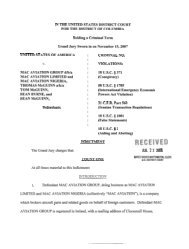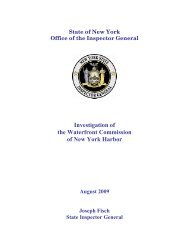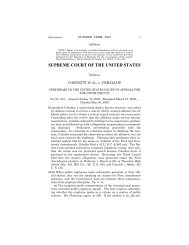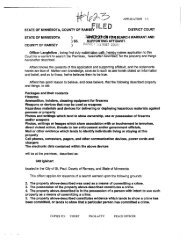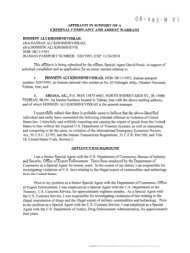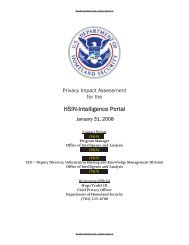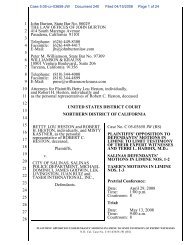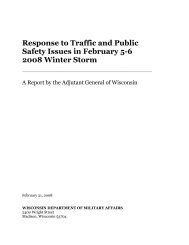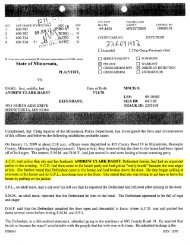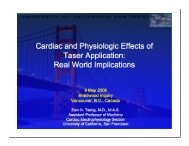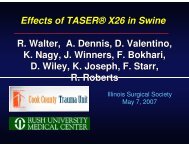TASER Electronic Control Devices Review Of Safety Literature
TASER Electronic Control Devices Review Of Safety Literature
TASER Electronic Control Devices Review Of Safety Literature
You also want an ePaper? Increase the reach of your titles
YUMPU automatically turns print PDFs into web optimized ePapers that Google loves.
found. Additionally, the anesthetized animals were not ventilated and there were<br />
no control animals used in the study that did not receive an ECD exposure. Thus<br />
it was not possible to separate the effects of the anesthetic, lack of ventilation,<br />
and the posture from the ECD exposure.<br />
Since 2005, human studies have been performed by staff from several Emergency<br />
Departments. ECD exposure volunteers were instrumented with a breathing<br />
monitoring device which showed that the <strong>TASER</strong> X26 did not interfere with<br />
breathing. 137<br />
The first such study assessed the breathing capability of human subjects during<br />
extended exposures to a <strong>TASER</strong> ECD. It comprised 52 resting human subjects<br />
who underwent breath-by-breath gas exchange monitoring during a 15-second<br />
discharge from a <strong>TASER</strong> X26. The subjects were randomized and placed on a<br />
pulmonary function measurement device and received either 3 discharges of 5-<br />
seconds each with a 1-second break between cycles or had a continuous discharge<br />
of 15 seconds applied. Common respiratory parameters were collected<br />
before, during and after the exposure. Health histories and demographic information<br />
were also collected on the volunteers.<br />
The researchers were unable to detect any respiratory impairment during either<br />
prolonged continuous or prolonged intermittent ECD exposure in this study population.<br />
It does not appear that prolonged ECD exposure causes a decreased tidal<br />
volume, hypercapnia, hypoxia, or apnea.<br />
The same group of researchers has also studied volunteers with continuous ECD<br />
exposures up to 45-seconds and also found no breathing compromise.<br />
The University of California at San Diego has also performed breathing studies<br />
using the X26 ECD. 68 They found no impairment of breathing in any of the volunteers.<br />
3.2. Acidosis<br />
Two published studies by Ho, et al. have examined blood markers of acidosis. In<br />
one study subjects were exposed to 5-second discharges of the <strong>TASER</strong> X26. 65<br />
Serum bicarbonate was followed serially. In a “pure” uncompensated respiratory<br />
acidosis, the serum bicarbonate should increase. The mean baseline bicarbonate<br />
was 22.6 mmol/l. Immediately after the exposure, the mean bicarbonate was<br />
22.0 mmol/l. This does not suggest an uncompensated respiratory acidosis.<br />
In the related second published Ho, et al human study, subjects were asked to<br />
exercise to physical exhaustion, and were then immediately exposed to a 15-<br />
second discharge of the <strong>TASER</strong> X26. 138 Venous pH was drawn prior to exertion,<br />
immediately after exertion, and immediately after the <strong>TASER</strong> ECD exposure. In<br />
50




